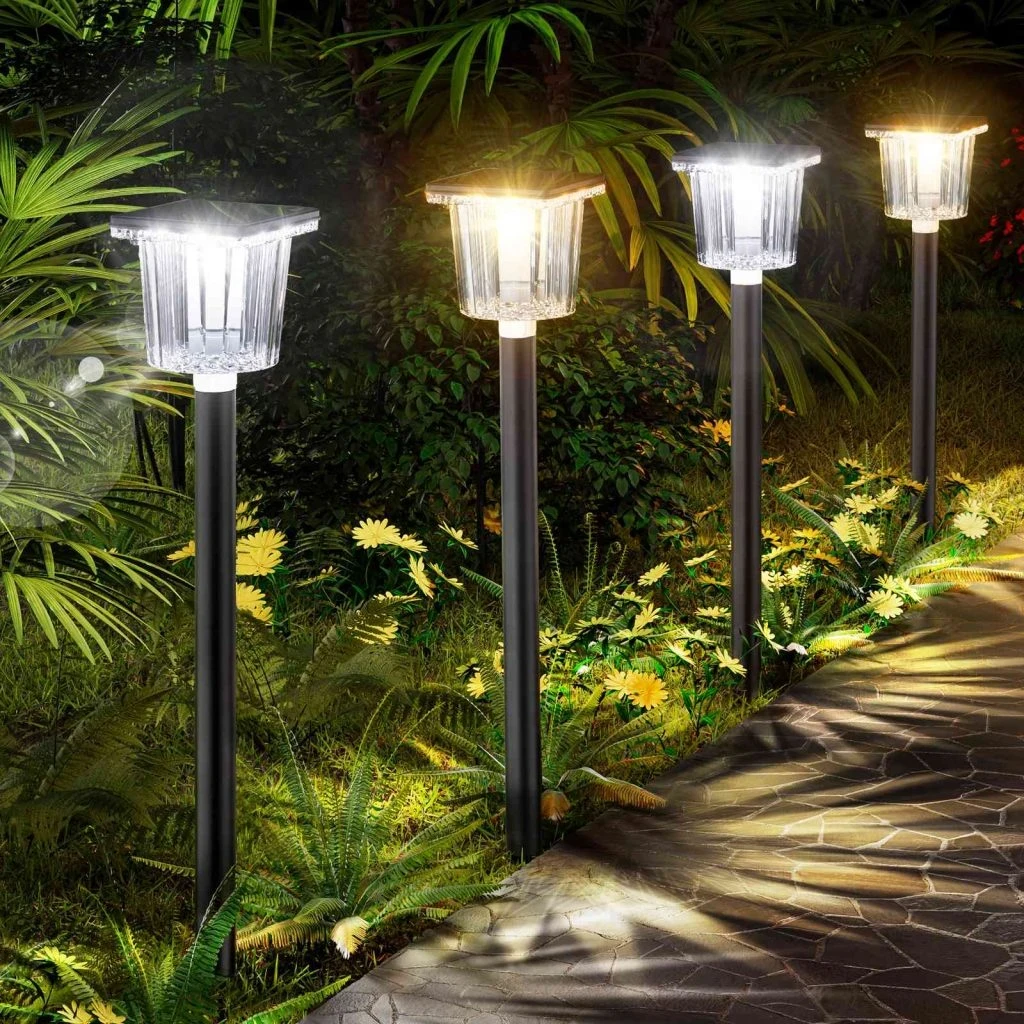Solar Lighting Benefits
Garden pathway lights powered by solar energy offer a compelling blend of aesthetic appeal, environmental responsibility, and cost savings. As homeowners and businesses increasingly prioritize sustainability, solar-powered pathway lights have emerged as an accessible entry point into renewable energy. These lights harness sunlight to illuminate walkways, gardens, and outdoor spaces, reducing reliance on grid electricity and lowering carbon footprints. In 2025, global and regional solar incentives make adopting solar pathway lights more affordable than ever, amplifying their economic and ecological value. This article explores how leveraging these incentives can transform outdoor lighting while aligning with broader renewable energy goals.
Solar pathway lights are low-maintenance, easy to install, and eliminate the need for complex wiring or ongoing electricity costs. Unlike traditional lighting, which contributes to greenhouse gas emissions through fossil fuel-based power, solar lights operate on clean energy, supporting global efforts to combat climate change. With advancements in solar technology, modern pathway lights are more efficient, durable, and stylish, making them a practical choice for enhancing outdoor spaces. In 2025, financial incentives such as tax credits, rebates, and subsidies further reduce the upfront costs, making solar pathway lights an attractive investment for both residential and commercial properties.

2025 Solar Incentive Programs
Global Solar Incentives
In 2025, governments worldwide continue to promote renewable energy through robust incentive programs, many of which apply to small-scale solar installations like garden pathway lights. The United States offers the Residential Clean Energy Credit, a federal tax credit covering 30% of the cost of solar systems, including solar-powered lighting, installed through 2032. This credit, extended by the Inflation Reduction Act, reduces tax liability dollar-for-dollar, with no upper limit on eligible costs. However, subsidies or rebates from utilities must be subtracted from the total cost before calculating the credit, as they are considered purchase-price adjustments. For example, a $500 solar pathway light system could yield a $150 tax credit, assuming no additional rebates apply.
In Australia, the Small-scale Renewable Energy Scheme (SRES) provides Small-scale Technology Certificates (STCs) that act as a point-of-sale discount, reducing the cost of solar installations by up to 33%. For a typical set of solar pathway lights costing $600, this could translate to a $200 savings. New South Wales (NSW) supplements this with rebates of up to $3,000 for solar systems, depending on system size, and additional battery incentives that could apply if pathway lights are paired with energy storage.
Other regions, such as the European Union, offer varied incentives. Germany and France provide feed-in tariffs and grants for solar installations, while the UK’s Smart Export Guarantee allows households to earn payments for excess solar energy fed back to the grid. In emerging economies like India, state-specific programs, such as Gujarat’s rooftop solar initiative, have driven significant adoption of small-scale solar systems, including lighting. These global policies reflect a commitment to renewable energy, making 2025 an opportune year to invest in solar pathway lights.
Regional Variations
Regional incentives enhance the affordability of solar pathway lights. In the U.S., states like New Jersey offer the Successor Solar Incentive (SuSI) program, where homeowners earn $85 per megawatt-hour of solar energy produced, potentially offsetting costs over time. California’s Self-Generation Incentive Program (SGIP) provides rebates for energy storage systems, which can pair with solar lights for enhanced functionality. Local programs, such as San Diego’s Green Building Incentive Program, waive permit fees for solar installations, further lowering costs.
In Australia, New South Wales’ Peak Demand Reduction Scheme (PDRS) offers up to $2,400 for battery installations, with an additional $250–$400 for Virtual Power Plant participation, which could support integrated solar lighting systems. Western Australia and Queensland provide zero-interest loans and feed-in tariffs, enabling homeowners to recoup costs through energy exports. These regional variations allow consumers to stack incentives, significantly reducing the financial barrier to adopting solar pathway lights.
Cost vs. Long-Term Returns
Installation Costs
The cost of solar pathway lights varies based on quality, design, and system size. In 2025, a set of 10 high-quality solar pathway lights typically costs between $200 and $600, depending on features like brightness, battery capacity, and material durability. Installation is straightforward, often requiring no professional assistance, as most solar lights are stake-mounted and wire-free. However, additional costs may arise for systems paired with batteries or smart controls, which enhance performance but increase upfront expenses to $800–$1,500 for larger setups.
In the U.S., the federal tax credit can reduce costs by 30%, bringing a $500 system down to $350 after tax savings. In Australia, STCs might lower the same system to $400. Regional rebates, such as those in NSW or California, can further reduce costs by $100–$500, depending on eligibility. These incentives make solar pathway lights competitive with traditional grid-powered lights, which incur ongoing electricity costs and require professional installation, often exceeding $1,000 for comparable setups.

Long-Term Returns
The financial returns of solar pathway lights stem from their elimination of electricity costs and low maintenance requirements. Traditional pathway lights, powered by grid electricity, can cost $50–$100 annually in energy bills for a typical residential setup, based on average U.S. electricity rates of 19 cents per kWh. Solar lights, by contrast, have zero operational costs, as they rely entirely on sunlight. Over a 10-year lifespan, this translates to savings of $500–$1,000, often exceeding the initial investment.
Additionally, solar lights increase property value by enhancing curb appeal and signaling environmental consciousness. In Australia, homes with solar installations can see a 3–4% increase in property value, translating to thousands of dollars in added equity. In regions with feed-in tariffs, excess energy from integrated solar systems can generate income, further improving returns. For example, New Jersey’s SuSI program could yield $50–$100 annually for small solar setups, while Australia’s feed-in tariffs offer up to 10 cents per kWh exported. Maintenance costs are minimal, typically limited to occasional cleaning or battery replacement every 5–7 years, costing $20–$50.
The payback period for solar pathway lights is typically 2–5 years, depending on incentives and local electricity rates. After this period, the lights generate pure savings, making them a financially sound investment. Environmentally, each set of solar lights reduces carbon emissions by approximately 50–100 kg annually, equivalent to planting 2–4 trees, aligning with global sustainability goals.
Applying for Incentives
Step-by-Step Guide
- Research Eligibility: Check federal, state, and local government websites for available incentives. In the U.S., visit the IRS website for the Residential Clean Energy Credit or the Database of State Incentives for Renewables & Efficiency (DSIRE). In Australia, consult energy.gov.au or state-specific portals like NSW’s government website. Confirm household income, property value, or system requirements, such as using Clean Energy Council-approved components in NSW.
- Choose Certified Installers: Select a reputable installer accredited by organizations like the Clean Energy Council (Australia) or certified under U.S. Energy Star standards. For DIY installations, ensure products meet certification standards (e.g., Solar Rating Certification Corporation for solar lights) to qualify for incentives.
- Obtain Quotes: Request quotes from multiple installers or suppliers, specifying that you intend to claim incentives. Ensure quotes reflect pre-rebate costs, as some rebates, like NSW’s point-of-sale discount, are applied directly.
- Submit Applications: For tax credits, file IRS Form 5695 (U.S.) with your annual tax return, including receipts and manufacturer certifications. For rebates, apply through government portals or have your installer submit on your behalf, as in NSW’s online portal. Provide documentation like proof of purchase and installation dates.
- Track Approvals: Monitor application status through online portals or by contacting program administrators. Rebates are typically applied within weeks, while tax credits are processed during tax season.
Recommendations
- Act Early: Incentives like the U.S. federal tax credit and NSW rebates decrease over time. Install by December 31, 2025, to maximize savings.
- Consult Professionals: Work with tax advisors to optimize credit claims and solar installers to navigate regional programs.
- Combine Incentives: Stack federal, state, and local incentives where possible. For example, combine the U.S. tax credit with California’s SGIP or NSW’s PDRS for maximum savings.
- Verify Product Eligibility: Ensure solar pathway lights meet program standards, such as Energy Star or CEC certification, to avoid disqualification.
- Explore Financing: Consider zero-interest loans in Australia or PACE financing in Florida to cover upfront costs, repayable through energy savings or property taxes.
Accelerating Solar Adoption
In 2025, solar pathway lights represent a practical and impactful way to embrace renewable energy. With global and regional incentives reducing costs by 30–50%, these lights are more accessible than ever. The financial benefits—zero electricity costs, potential property value increases, and payback periods of 2–5 years—make them a smart investment. Environmentally, they contribute to carbon reduction and align with global sustainability targets. By acting promptly, researching eligibility, and leveraging certified products and installers, consumers can maximize savings and enhance their outdoor spaces. As incentives phase out in the coming years, 2025 is a pivotal moment to adopt solar pathway lights, driving both personal and planetary benefits.


Leave a Reply